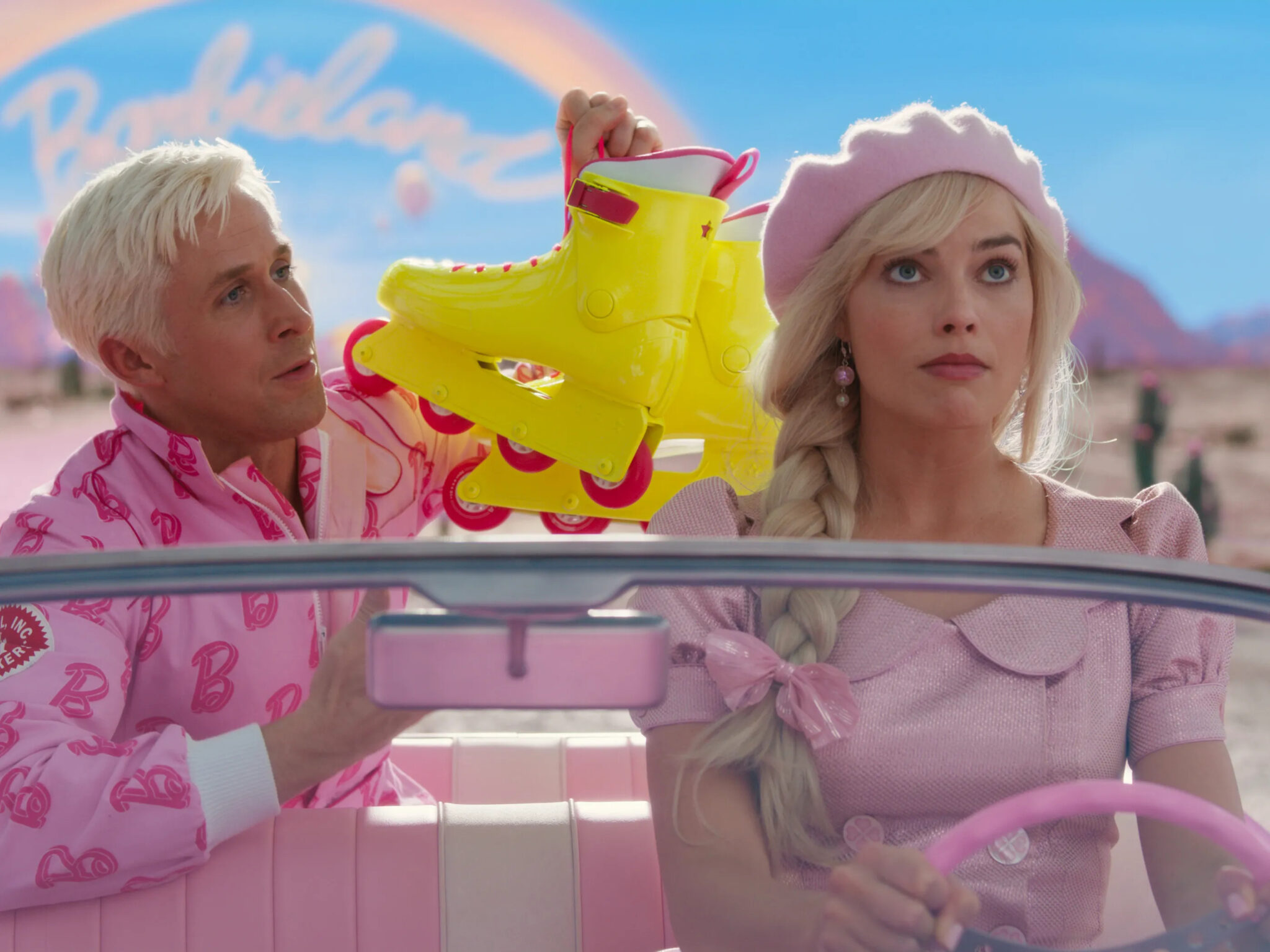What is a story’s theme? The theme of any story is the emotional and philosophical essence of the narrative, by way of two possible deliveries:
- The message the writer aims to impart to the audience extending beyond the plot and story developments.
- The higher meaning of a story based on the audience’s interpretation.
Let’s dig a bit deeper into what theme is, explore examples of themes in iconic movies, and how you can use them in your stories.

Okay, So What Does “Theme” Really Mean?
A theme is like the big idea or message in a piece of art. It’s something that pretty much everyone can relate to and makes you feel something deep inside.
Think of theme as the heart and soul of the story — the center core. It’s what the folks who write and make movies and TV series want you to take away from it all, beyond all the stuff that happens in the plot and with the characters.
While the plot and story showcase conflicts the characters must overcome, the underlying theme is the glue that holds those elements together with deeper meaning.
Read More: 3 Philosophies to Finding Your Screenplay’s Theme

Examples of Theme in Popular Movies
Barbie
Barbie uses comedy, pop culture, and iconic toy branding to explore themes of female empowerment, self-discovery, identity, self-esteem, and existentialism. While female empowerment is the surface theme, the movie offers something that everyone of any gender can learn and grow from.
Read More: America Ferrera’s Glorious ‘Barbie’ Monologue Explained
Oppenheimer
Oppenheimer uses historical figures and events to explore themes of moral responsibility, scientific ethics and the cost of knowledge.
Read More: Why are Barbie and Oppenheimer Battling at the Box Office?
Jurassic Park
While Steven Spielberg’s Jurassic Park was about characters surviving on an island full of dinosaurs, the theme shows that the story is really about the dangers of playing God and the ethics of science and knowledge.
How Important is Theme?
Laughs, history and thrills are great, but it’s the theme that has the audience walking away from the movie or TV episode affected on an emotional level beyond entertainment and informative cinematic experiences. It is because of theme that we find ourselves pondering more existential questions like:
- What’s lurking in the darkness we’re too scared to explore?
- Is being greedy actually a good thing?
- How much can someone take before they turn into a real savage?
- Would you do anything to protect your family, even if it meant doing something terrible?
- Would you sacrifice yourself for those you love?
- Can love really hit you like lightning the first time you see someone?

How Do Themes Work on an Emotional Level?
Themes Trigger Empathy and Catharsis
Themes speak to the core of who we are as humans, offering a cathartic experience that connects with us on a deeper level. These universal themes make us feel things by triggering empathy and catharsis.
Empathy
Empathy can be described as the act of comprehending, showing awareness of, displaying sensitivity towards, and indirectly participating in the emotions, ideas, and encounters of someone else. This mirrors the response writers aim to elicit in both the readers and the audience with the goal being to have them immerse themselves in the characters’ lives.

You don’t even have to have the exact same experiences as the characters to get emotional. It’s all about finding that common ground and feeling what they feel.
Read More: 7 Ways Screenwriters Can Create Better Character Empathy
Catharsis
Catharsis can be understood as the emotional release experienced upon the story’s resolution and the completion of the protagonist’s journey.
Examples of Empathy and Catharsis in Film
Field of Dreams
In Field of Dreams, Ray spends the whole movie trying to figure out what the field is trying to tell him. “If you build it, he will come.” “Ease his pain.” “Go the distance.”
He realizes that the whispers were always about the one person he didn’t think of — his father.
In the end, Ray turns to the field and sees his father. The sad truth is that they had never shared the one thing they had in common together — their love of baseball. It was perhaps the common ground on which they could have built a better relationship. And now they have their chance to do just that.
The Pursuit of Happyness
When you watch the inspiring The Pursuit of Happyness, you don’t need to have experienced homelessness or the pursuit of a dream that continues to evade you to be moved by this end scene.
You can watch that character go through that and come out changed — and maybe even inspired to chase a new dream.
Between these two examples, you can encapsulate those themes with a single word:
- Reconciliation (Field of Dreams)
- Perseverance (The Pursuit of Happyness).
You can also frame these themes as questions directed at the audience:
- “Should it take a miracle for someone to forgive?”
- “What hardships are you prepared to endure to achieve your dreams?”
That’s empathy and catharsis. And that is theme.
Story Themes Also Shine a Light on Society
Movies and TV shows can even use story themes to shine a light on what’s going on in the world right now.
In Ron Howard’s Thirteen Lives, the underlying theme shows that people from all walks of life can come together to do what’s right.
In Adam McKay’s Don’t Look Up, the story is like a big mirror reflecting on how politics can alter our ability to think straight. It’s also a bit of a wink towards the divisive topic of climate change.
And, yes, if we go back to Oppenheimer, we can see the light being shined on the concerns of moral responsibility, scientific ethics, the cost of knowledge and even humankind’s thirst for power.
If a writer wants to make a statement and try to use storytelling as a way to help humankind, their story’s themes are the way to accomplish that — or at least get people talking a bit more about what’s going on in the world.
Use Theme as the Glue of Your Story and Characters
While there is no single step-by-step process to ensure that you’re injecting themes into your stories, you can (and should) do your best to ensure that the themes you are trying to explore and share are always at the core of what you are writing.
- If your story theme is about love, your story should be a loving story that explores all aspects (good and bad) of love.
- If your story theme is about humankind vs. nature, your story should showcase the dynamics of that struggle between the two.
- If your story theme is about justice, your story should embrace the pursuit of it through all means necessary.

Do You Have to Include a Theme in Your Story?
That said, there are those who believe you shouldn’t chase theme too much during the writing process. Oscar-winning screenwriter and director Paul Thomas Anderson said:
“If I’ve ever had a theme in mind, I mean, usually that’s just the worst. Then you feel yourself writing. And there’s nothing worse than that feeling of, kind of, chasing after a theme.”
The story and characters are pivotal for the audience. While theme is central to the storytelling process, it’s at first secondary to the audience. You need to get them through the story for them to discover and recognize the theme. You accomplish this by finding that perfect balance between ensuring that themes are present during the writing process and not keeping you held hostage by them as well.
Theme Is Subjective
It’s key to remember that theme can also be subjective. One interpretation of the intended or unintended theme can and will be different from another.

The few Barbie critics out there seem to think that the film’s true theme is misandristic, while most embrace the intended themes of female empowerment (which isn’t misandristic), self-discovery, identity, self-esteem, and existentialism.
To this day, some critics and cinema theorists swear that Steven Spielberg’s E.T. the Extra-Terrestrial is a Christ-figure allegory. Spielberg laughs off such notions, reminding people that he’s Jewish. Point being? He had no intention of creating a Christ-figure allegory — but people can interpret his story in their own way, and he’s fine with that.
—
That’s what theme is in a nutshell when it comes to movies and TV series. It’s a vital part of the cinematic experience. Though the audience may inevitably have their own interpretation of the themes you present, your themes will often speak to our grander universal human experiences, from our struggles to forgive to the fear of pursuing our dreams.
Ken Miyamoto has worked in the film industry for nearly two decades, most notably as a studio liaison for Sony Studios and then as a script reader and story analyst for Sony Pictures.
He has many studio meetings under his belt as a produced screenwriter, meeting with the likes of Sony, Dreamworks, Universal, Disney, and Warner Brothers, as well as many production and management companies. He has had a previous development deal with Lionsgate, as well as multiple writing assignments, including the produced miniseries BLACKOUT, starring Anne Heche, Sean Patrick Flanery, Billy Zane, James Brolin, Haylie Duff, Brian Bloom, Eric La Salle, and Bruce Boxleitner, the feature thriller HUNTER’S CREED, and many produced Lifetime thrillers. Follow Ken on Twitter @KenMovies and Instagram @KenMovies76.
CHECK OUT OUR PREPARATION NOTES SO YOU START YOUR STORY OFF ON THE RIGHT TRACK!
The post What Is Theme? appeared first on ScreenCraft.
Go to Source
Author: Ken Miyamoto


